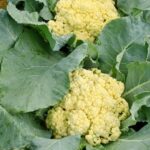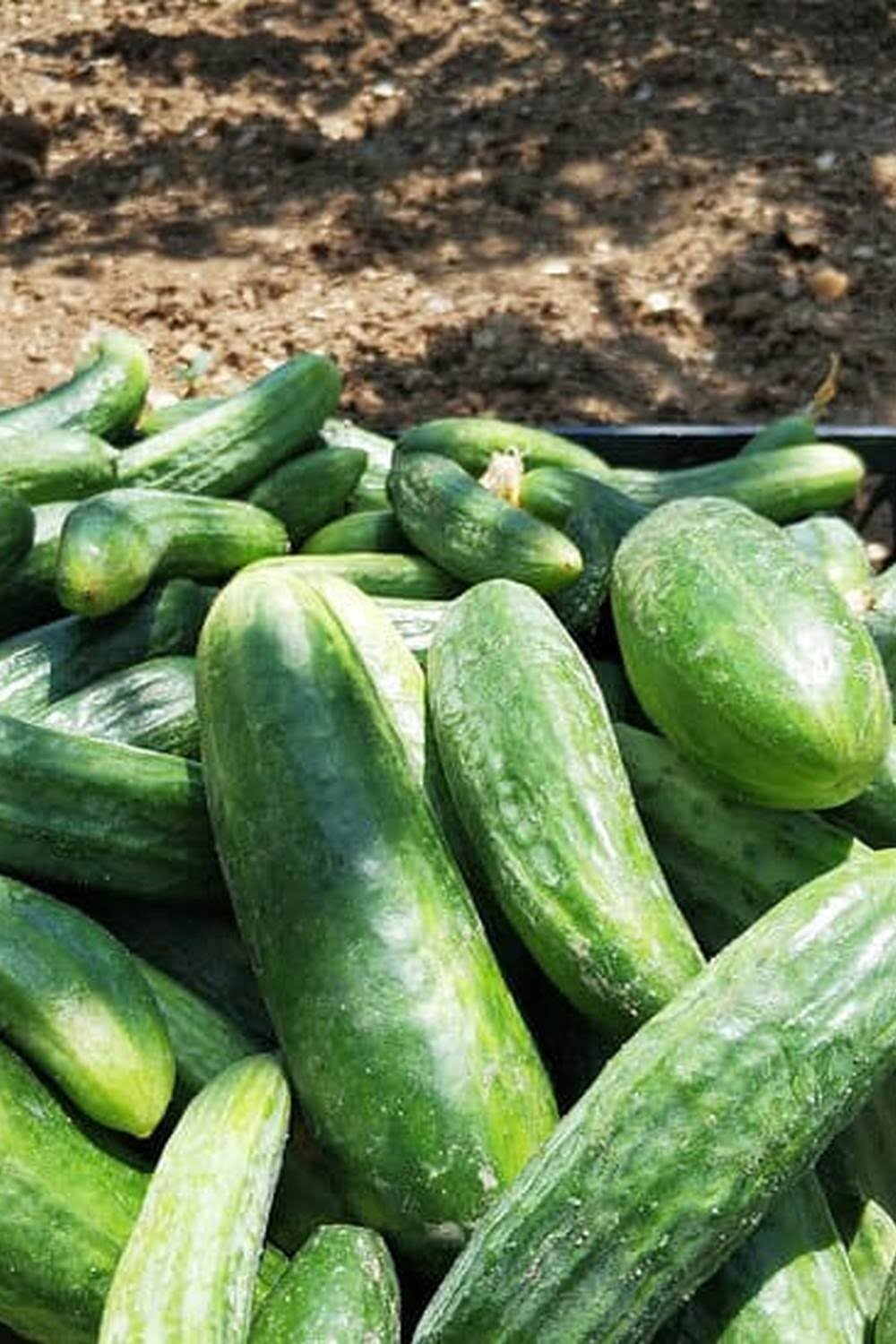Located in the heart of the Midwest, Minnesota offers a rich tradition of vegetable gardening that dates back generations. From its unique climate and soil conditions to the challenges and rewards that come with tending to a garden in this region, Minnesota vegetable gardening has its own distinct characteristics.
This article delves into the world of Minnesota vegetable gardening, providing insights on everything from the best vegetables to plant, practical tips for starting a garden, dealing with the state’s unpredictable weather, managing pests and diseases, practicing sustainable and organic techniques, connecting with local gardening communities, and mastering harvesting and preserving methods.
When it comes to Minnesota vegetable gardening, understanding the specific needs of this region is crucial for a successful harvest. Factors such as temperature fluctuations, heavy rain, and diverse weather patterns present both challenges and opportunities for those looking to cultivate their own produce. By exploring the best vegetables that thrive in Minnesota’s climate and soil conditions and learning about sustainable practices tailored to this environment, gardeners can create bountiful gardens while working in harmony with nature.
Throughout this article, readers will find valuable information on planning and preparing their soil, choosing an ideal location for their garden beds, identifying common pests and diseases to watch out for in Minnesota’s gardens, and implementing strategies for protecting plants from adverse weather conditions. Additionally, we will explore how sustainable and organic gardening techniques are well-suited for Minnesota’s environmental landscape while highlighting resources available within local communities that support vegetable gardening initiatives.
Whether you’re new to gardening or a seasoned pro looking to enhance your knowledge of vegetable gardening in Minnesota, this comprehensive guide has something for everyone.
Best Vegetables for Minnesota
When it comes to Minnesota vegetable gardening, choosing the right vegetables to grow is essential for a successful harvest. The state’s climate and soil conditions present unique challenges, but there are several vegetables that thrive in Minnesota’s environment. Here are some top choices for vegetables to consider when planning your Minnesota garden:
Root Vegetables
Root vegetables such as carrots, beets, and radishes are well-suited for Minnesota’s cooler climate and can tolerate the state’s rich, loamy soil. These hearty vegetables are relatively low-maintenance and can be grown successfully in Minnesota gardens.
Leafy Greens
Vegetables like spinach, lettuce, and kale are excellent choices for Minnesota gardens due to their ability to withstand cooler temperatures. These leafy greens also benefit from the state’s fertile soil, making them a popular option for home gardeners in the region.
Brassicas
Cabbage, broccoli, and cauliflower are part of the brassica family and can thrive in Minnesota’s climate. While they may require a bit more attention and care compared to other vegetables, these nutritious options can produce bountiful yields when grown in Minnesota vegetable gardens.
In addition to these top choices, other vegetables that do well in Minnesota include peas, beans, peppers, and tomatoes. By selecting the right mix of vegetables that are well-suited for Minnesota’s climate and soil conditions, you can ensure a successful harvest from your garden.
Tips for Starting a Vegetable Garden in Minnesota
When it comes to starting a vegetable garden in Minnesota, proper planning and soil preparation are essential for a successful harvest. The first step is to choose the right location for your garden. Look for a spot that receives at least six hours of sunlight per day and has good drainage to ensure healthy plant growth.
Next, consider the type of soil in your chosen location. Many areas in Minnesota have heavy clay soil, which can be challenging for vegetable gardening. Testing your soil and amending it with organic matter such as compost or peat moss can help improve its texture and fertility.
Once you have chosen a location and assessed your soil, it’s time to plan the layout of your garden. Consider factors such as the size of your garden, the types of vegetables you want to grow, and any companion planting strategies you may want to implement. Planning ahead can help maximize space and promote healthier plant growth.
After planning your garden layout, the next step is to prepare the soil. In Minnesota, where winters are cold and harsh, it’s important to wait until the soil has warmed up before planting. Tilling the soil and adding organic matter or fertilizer can help create a nutrient-rich environment for your vegetables to thrive in.
By following these practical tips for starting a vegetable garden in Minnesota, you can set yourself up for a successful growing season. Taking the time to plan, prepare the soil, and choose the right location will ultimately lead to bountiful harvests of fresh produce from your own backyard.
Dealing With Minnesota’s Weather
Minnesota vegetable gardening comes with its own set of challenges when it comes to weather. The state experiences extreme temperature fluctuations, heavy rain, and unpredictable weather patterns that can pose a threat to vegetable gardens. However, with the right strategies in place, gardeners can protect their plants and ensure a successful harvest.
Here are some practical strategies for dealing with Minnesota’s weather:
1. Use row covers or hoop houses: Row covers or hoop houses can help protect plants from sudden temperature drops and frosts. These structures act as a barrier against cold winds and can provide insulation for tender plants.
2. Mulch the garden beds: Mulching the garden beds can help regulate soil temperature and retain moisture during hot and dry periods. It also helps prevent soil erosion during heavy rainfalls.
3. Install shade cloth: In periods of intense heat, shade cloth can be used to provide protection for delicate plants. This allows them to thrive without succumbing to sunburn or heat stress.
By implementing these strategies, Minnesota vegetable gardeners can mitigate the impact of extreme weather conditions and create a resilient garden that can withstand the challenges posed by the state’s climate. With proper planning and preparation, gardeners can ensure a bountiful harvest of fresh produce throughout the growing season.
Pests and Diseases to Watch Out For
Minnesota is a great place for vegetable gardening, but it comes with its fair share of challenges. Understanding the common pests and diseases that can affect Minnesota vegetable gardens is essential for maintaining a healthy and thriving garden. Some of the most common pests to watch out for in Minnesota include aphids, cutworms, and cabbage worms.
These pests can wreak havoc on your vegetables if left unchecked. Additionally, diseases such as blight, powdery mildew, and bacterial wilt are prevalent in Minnesota and can quickly spread throughout a garden if not properly managed.
Preventing and managing these pests and diseases is crucial for the success of a Minnesota vegetable garden. One effective method is practicing companion planting, where certain plants are grown together to deter pests or attract beneficial insects. For example, planting marigolds alongside vegetables can help repel aphids and other harmful insects. It’s also important to regularly inspect plants for signs of disease or pest infestations so that prompt action can be taken.
In addition to preventative measures, there are also organic options for managing pests and diseases in a Minnesota vegetable garden. For instance, using neem oil or insecticidal soap can effectively control aphids and other soft-bodied insects without harming beneficial insects like ladybugs or bees.
Furthermore, rotating crops each year can help prevent the build-up of disease pathogens in the soil, reducing the risk of plant infections. By being proactive and employing these strategies, gardeners in Minnesota can ensure their vegetable gardens remain healthy and productive.
| Pests | Diseases |
|---|---|
| Aphids | Blight |
| Cutworms | Powdery Mildew |
| Cabbage Worms | Bacterial Wilt |
Sustainable and Organic Practices
Minnesota’s unique environmental and agricultural landscape creates the perfect opportunity for sustainable and organic vegetable gardening practices. Embracing these techniques not only benefits the environment but also contributes to healthier and more nutritious produce. One of the key principles of sustainable and organic gardening is soil health.
By using natural fertilizers, compost, and cover crops, gardeners can improve soil structure, fertility, and overall health. This is particularly important in Minnesota, where harsh winters and heavy rains can take a toll on the soil.
In addition to focusing on soil health, sustainable and organic gardening in Minnesota also involves water conservation. The state’s variable climate means that water management is crucial for successful vegetable gardening. Techniques such as drip irrigation, mulching, and rainwater harvesting can help gardeners conserve water while ensuring that their crops receive adequate moisture. By reducing water waste and promoting efficient usage, these practices are well-suited for the environmental conditions of Minnesota.
Furthermore, sustainable and organic pest management is essential for Minnesota vegetable gardens. Integrated Pest Management (IPM) techniques emphasize natural predators, crop rotation, and physical barriers to control pests without relying on harmful chemicals. This approach not only protects beneficial insects but also minimizes the risk of chemical contamination in the environment. In the context of Minnesota’s diverse ecosystem, implementing IPM strategies can help maintain ecological balance while safeguarding vegetable crops from potential harm.
| Sustainable Gardening Practices | Benefits |
|---|---|
| Soil Health Improvement | Enhanced fertility and structure |
| Water Conservation | Efficient usage in variable climate |
| Pest Management | Natural control methods for ecological balance |
Community and Resources
Minnesota is home to a thriving community of vegetable gardeners who are passionate about sharing their knowledge and experiences. Whether you are a beginner or an experienced gardener, connecting with local vegetable gardening communities, organizations, and resources can provide invaluable support and inspiration for your gardening journey.
Local Gardening Clubs and Organizations
One of the best ways to connect with other vegetable gardeners in Minnesota is to join a local gardening club or organization. These groups often host meetings, workshops, and events where members can share tips, swap seeds or plants, and learn from each other’s successes and challenges. Some popular gardening clubs in Minnesota include the Minnesota State Horticultural Society and the University of Minnesota Extension Master Gardener Program.
Community Gardens
Another great way to get involved in the local vegetable gardening community is to participate in a community garden. Community gardens provide opportunities for individuals to grow their own vegetables in shared plots while also fostering a sense of community and collaboration. Many cities in Minnesota have community garden programs that offer affordable gardening space, access to tools and resources, and the chance to connect with fellow gardeners.
Online Resources
In addition to local community groups, there are also many online resources available for Minnesota vegetable gardeners. Websites such as the University of Minnesota Extension’s Yard & Garden website offer a wealth of information on topics ranging from soil preparation to pest management specific to Minnesota’s growing conditions. Online forums and social media groups dedicated to Minnesota vegetable gardening are also great places to seek advice, share experiences, and connect with like-minded individuals.
By tapping into these local communities, organizations, and resources, you can gain valuable knowledge, find support during challenging times in your garden, learn about new techniques or plant varieties that thrive in the specific conditions of
Harvesting and Preserving
In conclusion, Minnesota vegetable gardening offers a unique and rewarding experience for gardeners willing to embrace the challenges of the state’s climate and soil conditions. By choosing the best vegetables for Minnesota, planning carefully, and implementing sustainable and organic practices, gardeners can successfully grow an abundance of fresh produce. However, it is essential to be prepared for dealing with Minnesota’s unpredictable weather, as well as pests and diseases that may affect vegetable gardens.
Harvesting the fruits of a Minnesota vegetable garden is a highly anticipated event for any gardener. From crisp cucumbers to juicy tomatoes, there’s nothing quite like enjoying the literal fruits of your labor. Proper harvesting techniques can ensure that your vegetables are at their peak freshness and flavor when picked. Furthermore, preserving this bounty through canning, freezing, or storing allows you to enjoy your homegrown produce throughout the year.
For those interested in Minnesota vegetable gardening, it’s important to connect with local communities and resources that can offer support and inspiration. Whether it’s joining a gardening club or seeking advice from experienced growers in the area, being part of a community can enhance your gardening experience. With careful planning and attention to detail, a successful Minnesota vegetable garden can provide an abundance of fresh produce for your enjoyment.
Frequently Asked Questions
What Vegetables Are Good to Grow in Minnesota?
In Minnesota, some vegetables that grow well include tomatoes, carrots, potatoes, peas, lettuce, and spinach. These vegetables thrive in the cooler temperatures and shorter growing season that is common in this region.
What Vegetables Should Be Planted Next to Each Other?
Planting certain vegetables next to each other can help with pest control and maximize space. For example, planting aromatic herbs like basil and rosemary next to tomatoes can help deter pests. Additionally, tall plants like corn can provide shade for shorter plants like lettuce.
What Is the Best Layout for a Vegetable Garden?
The best layout for a vegetable garden depends on various factors such as available space, sunlight exposure, and water access. However, a common layout is to plant rows of taller plants (like corn or trellised tomatoes) on the north side of the garden to prevent shading of smaller plants by larger ones.
This allows for more even sunlight distribution. Also, rotating crops each year helps prevent depletion of soil nutrients and reduces the risk of pest infestations.

If you’re looking to get into vegetable gardening, or are just looking for some tips on how to make your current garden better, then you’ve come to the right place! My name is Ethel and I have been gardening for years. In this blog, I’m going to share with you some of my best tips on how to create a successful vegetable garden.





